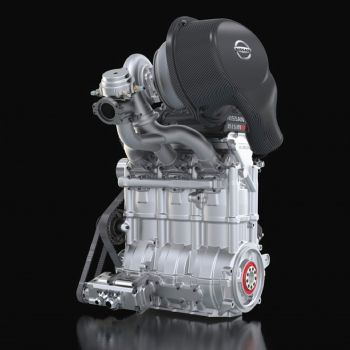
@Nissan #engineering #engine #mfg #nissan Nissan recently showed its ultra-light DIG-TR 1.5-litre three-cylinder petrol engine, which has a power-to-weight ratio better than the engine of an F1 racing car. It is half of the hybrid power plant for Nissan’s ZEOD RC (Zero Emission On Demand Racing Car), which is set to become the first vehicle to complete a lap of the Circuit de la Sarthe at Le Mans solely under electric power this June.
The DIG-TR engine, which puts out 400bhp (298kW) and 380Nm of torque, is just 500mm tall x 400mm long x 200mm wide — small enough to fit inside the luggage guides found at airport check-ins, but perhaps too heavy (at 40kg) to be considered as hand luggage.
It is an example of how Nissan is approaching the ZEOD RC with an eye towards reducing size while increasing efficiency. The ZEOD RC is also part of an effort to develop a more efficient petrol/electric hybrid engine that can switch on or off on demand.
Both the petrol and electric parts of the power plant go through the same five-speed gearbox. However, Nissan says that the real problem in developing the DIG-TR for the ZEOD RC was reducing friction (the less there is, the less the engine needs to deal with its consequences); the company worked closely with the French company Total to come up with better fuels and lubricants.
After recent dyno testing, Nissan took to the track to test both the electric and petrol components. After further testing over the next four months, ZEOD RC will take part in the Le Mans 24 Hour, where it will occupy ‘Garage 56’, which is reserved for new technology demonstrators. It will do one lap using only electric power (lasting about 1hr), before switching to the DIG-TR for the rest of the run.